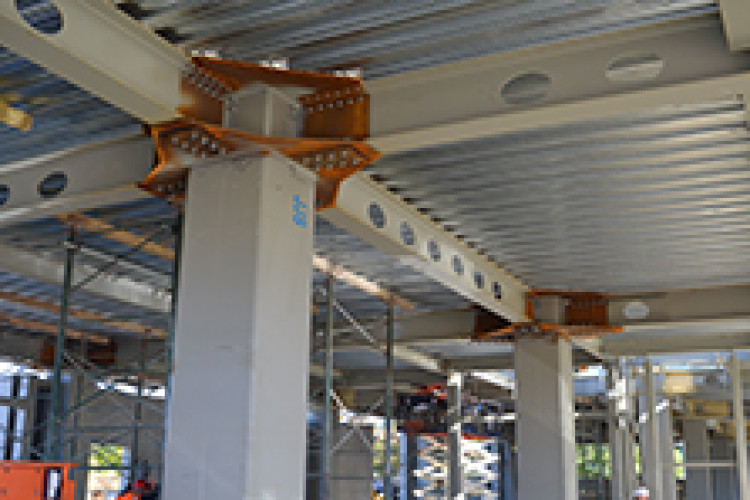The two-way sliding hinge joint technology, devised by engineering consultancy Aurecon in association with the University of Canterbury, helps dissipate energy from an earthquake by the joints moving, thus protecting the building’s columns and beams.
Aurecon technical director Stephen Hogg said that one-way sliding hinge joint technology has been used in New Zealand for several years, but this building required a more complicated solution. “The design of the building is highlighted by large open floor spaces and retail tenancies around all sides of the buildings,” he said. “This meant we couldn’t rely on lots of bracing and walls as it would block off retail entries and cause compromise to the architecture.
“It would also put too much force on the foundations and there were just not enough columns in the design of the building to allow us to use one way sliding hinge joint technology, therefore we had to devise a two-way system.”
Aurecon engineers had several concept design sessions starting with blank sheets of paper and collected as many crazy and not so crazy ideas as they could. Included in these initial sessions was Dr Hsen-Han Khoo, who had researched sliding hinge technology as part of his doctorate.

“Over a couple of weeks they put some calculations to the ideas, then 3D modelled the concept,” he said. “The crucial time came when we arranged a meeting with the University of Canterbury’s lead researcher in this technology, Dr Greg MacRae, to discuss our concept and see if he thought it would fly. The outcome was a resounding ‘yes, it’s a winner’. The concept we had proposed was exactly where the research into this technology was heading but they had not yet started on it. We were ahead of the game and about to embark on a world-first design.” The Aurecon designers worked closely with MacRae throughout the development of the design.
The two-way sliding hinge joints, as well as helping dissipate energy during an earthquake, also act like a fuse in that they will fail first, thereby protecting the columns and beams. Failed hinges can be repaired simply by replacing the bolts following the earthquakes and the building quickly brought back to standard. The building will sway during an earthquake and research has shown it will gradually re-centre itself, back to a minimum of 90% of vertical, as the earthquake subsides, and not remain at an extreme angle as happened to several buildings in the 2011 earthquakes.
The steel columns are 12m long and weight about 4t each. They sit on top of the raft foundations and are bolted to these concrete foundations via the two-way sliding hinge. The plate thickness of the columns becomes progressively thinner the higher up the building to reflect the lighter seismic loading while also saving on steel weight, therefore cost. The columns also travel to the roof of the building rather than finishing on the top floor to make the top floor bracing simple by cantilevering the columns rather than change to a different structural system. This gives the building the same structural system throughout.
Got a story? Email news@theconstructionindex.co.uk
.png)


